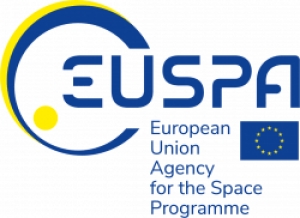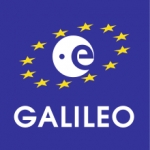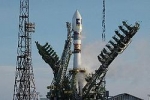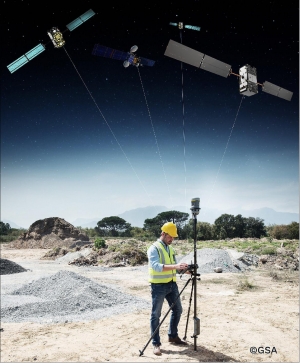Displaying items by tag: Galileo (navigation system)
European Union Agency for the Space Programme (EUSPA)
EUSPA is the only European Union agency dedicated to space. Our unique mission is to serve as the essential link between space technology and user needs, translating the European Union’s investment in space into valuable, reliable services for European citizens.
EUSPA is responsible for operational management of the EGNOS and Galileo satellite navigation programmes and for ensuring the continuous provision of their services. This involves the management, operation, maintenance, continuous improvement, evolution and protection of the systems’ infrastructure, including upgrades and obsolescence management. The Agency is also responsible for developing future generations of the systems, the evolution of their services, and for activities related to th extension of their coverage.
Our responsibilities also include overseeing the operation of such key service facilities as the Galileo Security Monitoring Centre (GSMC) in France and in Spain, the European GNSS Service Centre (GSC) in Spain, the Galileo Reference Centre (GRC) in the Netherlands, the Galileo Control Centres (GCC) in Italy and Germany and the Galileo Integrated Logistic Support Centre (GILSC) in Belgium.
An important element of our work at EUSPA is to support the development of downstream and integrated applications based on Galileo, EGNOS and Copernicus, including through the Fundamental Elements funding mechanism and Horizon Europe. We also support the development of fundamental technological elements, such as Galileo-enabled chipsets and receivers, and provide the European Commission with expertise, including in preparing research priorities related to the downstream space market.
Another key part of our work is communications, market development and promotion of Galileo and EGNOS, and of the data, information and services offered by Copernicus, to promote user uptake of these data and services with a view to maximising their socio-economic benefits.
A core task for EUSPA is security of the EU Space Programme. This includes security accreditation of all components of the space programme, through the Security Accreditation Board. EUSPA is also responsible for the operational security of Galileo and EGNOS, which is provided through the Galileo Security Monitoring Centre, and for the provision and delivery of the Galileo Public Regulated Service for governmental users.
EUSPA has been entrusted with coordination of user-related aspects of the European Union Governmental Satellite Communications (GOVSATCOM), in close collaboration with Member States and other involved entities.
The EC may also entrust the Agency with tasks related to the Space Situational Awareness (SSA) programme, particularly regarding programme security and the delivery of Space Surveillance and Tracking (SST) services. In addition, the EC may entrust EUSPA with tasks related to the Quantum Communication Initiative (QCI) and the broader Secure Connectivity Initiative.
At the heart of our work at EUSPA are our efforts to support an innovative and competitive EU space sector, to ensure that space continues to drive innovation-based growth in Europe, delivering services and applications that meet the challenges that we face and supporting the implementation of priority EU policies.
European GNSS Agency (GSA)
As an official European Union regulatory authority, the European GNSS Agency (GSA) manages public interests related to European GNSS(*) programmes.
The Agency's strategic objectives include the achievement of a fully operational GALILEO system. This includes the laying of foundations for a fully sustainable and economically viable system and its security.
(*) GNSS: Global Navigation Satellite Systems
OHB SE
OHB SE is a spaceflight company located in Bremen, northern Germany,
(OHB stands for "Orbitale Hochtechnologie Bremen" - Orbital High-technology Bremen)
Domiciled in Bremen, OHB SE (ISIN: DE0005936124, Prime Standard) is Germany’s first listed space and technology company. Two business units offer international customers sophisticated solutions and systems.
With over 39 years of experience in high technology together with its integrated skills in the areas of space technology and telematics, OHB Group is ideally positioned as one of the leading independent forces in the European space, aeronautics and telematics industry.
SPACE SYSTEMS
This business unit’s activities encompass satellites, manned spaceflight, exploration and security/reconnaissance technologies. Another focus is developing and implementing payloads, scientific equipment and devices for aeronautics/aerospace, research institutes and industry. Thus, OHB System AG develops, builds, launches and operates low-orbiting and geostationary small satellites for scientific applications, communications and terrestrial observation.
AEROSPACE
The „Aerospace" corporate division places emphasis on the manufacturing of products for aviation and space travel. In this regard, OHB has positioned itself as a significant equipment provider for aerospace structures for aviation and space travel and, amongst others, is Germany's largest supplier to the Ariane 5 programme and an established manufacturer of sensitive components made of highly heat resistant nickel based alloys and titanium for aircraft engines.
DIGITAL
The OHB Digital business unit leverages direct space capabilities and ensures the transfer of technology to selected industries.
Galileo Mission Segment (GMS)
The Galileo Mission Segment (GMS) will use a global network of nominally thirty Galileo Sensor Stations (GSS) to monitor the navigation signals of all satellites on a continuous basis.
It will use a comprehensive communications network using commercial satellites as well as cable connections in which each link will be duplicated for redundancy. The prime element of the GSS is the Reference Receiver. The GMS communicates with the Galileo satellites through a global network of Mission Up-Link Stations (ULS), installed at five sites, each of which will host a number of 3-metre antennas. ULSs will operate in the 5 GHz Radionavigation Satellite (Earth-to-space) band. The GMS will use the GSS network for the Orbitography Determination and Time Synchronisation (OD&TS) function, which will provide batch processing every ten minutes of all the observations of all satellites over an extended period and calculates the precise orbit and clock offset of each satellite, including a forecast of predicted variations (SISA - Signal-in-Space Accuracy) valid for the next hours. The results of these computations for each satellite will be up-loaded into that satellite nominally every 100 minutes using a scheduled contact via a Mission Up-link Station.
GIOVE-A2
GIOVE, or Galileo In-Orbit Validation Element, is the name for each satellite in a series being built for the European Space Agency (ESA) to test technology in orbit for the Galileo positioning system.
Giove is the Italian word for "Jupiter". The name was chosen as a tribute to Galileo Galilei, who discovered the first four natural satellites of Jupiter, and later discovered that they could be used as a universal clock to obtain the longitude of a point on the Earth's surface.
The GIOVE satellites are exploited by the GIOVE Mission (GIOVE-M) segment in the frame of the risk mitigation for the In Orbit Validation (IOV) of the Galileo positioning system.
GIOVE-A2
With the delays of GIOVE-B, the European Space Agency again contracted with SSTL for a second satellite, to ensure that the Galileo programme continues without any interruptions that could lead to loss of frequency allocations. Construction of GIOVE-A2 was terminated due to the successful launch and in-orbit operation of GIOVE-B.
GIOVE-B
GIOVE, or Galileo In-Orbit Validation Element, is the name for each satellite in a series being built for the European Space Agency (ESA) to test technology in orbit for the Galileo positioning system.
Giove is the Italian word for "Jupiter". The name was chosen as a tribute to Galileo Galilei, who discovered the first four natural satellites of Jupiter, and later discovered that they could be used as a universal clock to obtain the longitude of a point on the Earth's surface.
The GIOVE satellites are exploited by the GIOVE Mission (GIOVE-M) segment in the frame of the risk mitigation for the In Orbit Validation (IOV) of the Galileo positioning system.
GIOVE-B (previously called GSTB-V2/B), has a similar mission, but has greatly improved signal generation hardware.
It was originally built by satellite consortium European Satellite Navigation Industries, but following re-organization of the project in 2007, the satellite prime contractor responsibility was passed to Astrium.
GIOVE-B also has MEO environment characterization objectives, as well as signal-in-space and receiver experimentation objectives. GIOVE-B carries three atomic clocks: two rubidium standards and the first space-qualified passive hydrogen maser.
Launched on 27 April 2008
GIOVE-A
GIOVE, or Galileo In-Orbit Validation Element, is the name for each satellite in a series being built for the European Space Agency (ESA) to test technology in orbit for the Galileo positioning system.
Giove is the Italian word for "Jupiter". The name was chosen as a tribute to Galileo Galilei, who discovered the first four natural satellites of Jupiter, and later discovered that they could be used as a universal clock to obtain the longitude of a point on the Earth's surface.
The GIOVE satellites are exploited by the GIOVE Mission (GIOVE-M) segment in the frame of the risk mitigation for the In Orbit Validation (IOV) of the Galileo positioning system.
GIOVE-A
Previously known as GSTB-V2/A, this satellite was constructed by Surrey Satellite Technology Ltd (SSTL).
Its mission has the main goal of claiming the frequencies allocated to Galileo by the ITU. It has two independently-developed Galileo signal generation chains and also tests the design of two on-board rubidium atomic clocks and the orbital characteristics of the intermediate circular orbit for future satellites.
GIOVE-A is the first spacecraft whose design is based upon SSTL's new Geostationary Minisatellite Platform (GMP) satellite bus, intended for geostationary orbit. GIOVE-A is also SSTL's first satellite outside low Earth orbit, operating in medium Earth orbit), and is SSTL's first satellite to use deployable sun-tracking solar arrays. Previous SSTL satellites use body-mounted solar arrays, which generate less power per unit area as they do not face the sun directly.
Launched on 28 December 2005
It was launched at 05:19 UTC on December 28, 2005 on a Soyuz-FG/Fregat from the Baikonur Cosmodrome in Kazakhstan.
It began communicating as planned at 09:01 UTC while circling the Earth at a height of 23,222 km. The satellite successfully transmitted its first navigation signals at 17:25 GMT on 12 January 2006. These signals were received at Chilbolton Observatory in Hampshire, UK and the ESA Station at Redu in Belgium. Teams from SSTL and ESA have measured the signal generated by GIOVE-A to ensure it meets the frequency-filing allocation and reservation requirements for the International Telecommunication Union (ITU), a process that was required to be complete by June 2006.
The GIOVE-A signal in space is fully representative of the Galileo signal from the point of view of frequencies and modulations, chip rates, and data rates. However, GIOVE-A can only transmit at two frequency bands at a time (i.e., L1+E5 or L1+E6).
GIOVE-A codes are different from Galileo codes. The GIOVE-A navigation message is not representative from the structure and contents viewpoint (demonstration only purpose). The generation of pseudorange measurements and detailed analysis of the tracking noise and multipath performance of GIOVE-A ranging signals have been performed with the use of the GETR (Galileo Experimental Test Receiver) designed by Septentrio.
There has been some public controversy about the open source nature of some of the Pseudo-Random Noise (PRN) codes. In the early part of 2006, researchers at Cornell monitored the GIOVE-A signal and extracted the PRN codes. The methods used and the codes which were found were published in the June 2006 issue of GPS World. ESA has now made the codes public.
Galileo Navigation Program
Galileo is a joint initiative of the European Commission (EC) and the European Space Agency (ESA). Galileo will be Europe’s own global navigation satellite system, providing a highly accurate, guaranteed global positioning service under civilian control. It will be inter-operable with GPS and GLONASS, the two other GNSS (Global Navigation Satellite Systems). The complete system consists of:
• A space segment of 30 MEO satellites in 3 planes inclined at 56º
• A launch segment to place the satellites into their operational orbits
• A control ground segment for monitoring and control of the satellites
• A mission ground segment managing all mission specific data
• A user ground segment of equipment capable of receiving and using Galileo signals







